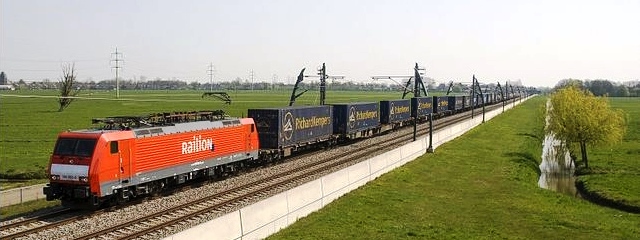
Intermodal transport
In Europe the term intermodal transport usually means unaccompanied rail transport. The first and final legs are covered by road and the long distances by rail. The process of intermodal transport typically looks like this: A truck picks up goods from the shipper in a special container or swap body. It takes the freight to the nearest terminal so that it can be transported over the longest distance efficiently by rail. A crane lifts the loading unit off the truck and loads it onto a wagon on the waiting train. On arrival at the destination station, a crane removes the unit again from the train and loads it back onto a truck, which then takes the consignment directly to the consignee. The transit time for full shipments within Europe is usually between one and three days.

Intermodal transport offers the following advantages:
- Payload up to 28 ton
- Punctual and reliable
- No delays at borders and tunnels
- Fixed departure and arrival
- Environmentally friendly due to less harmful emissions
- Combined transport offers the greatest safety for the transport of hazardous goods
- Theft and damage occur significantly less often than in road transport





